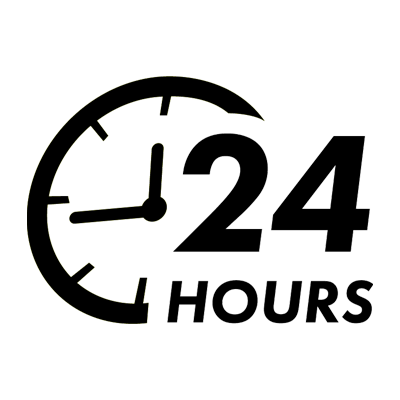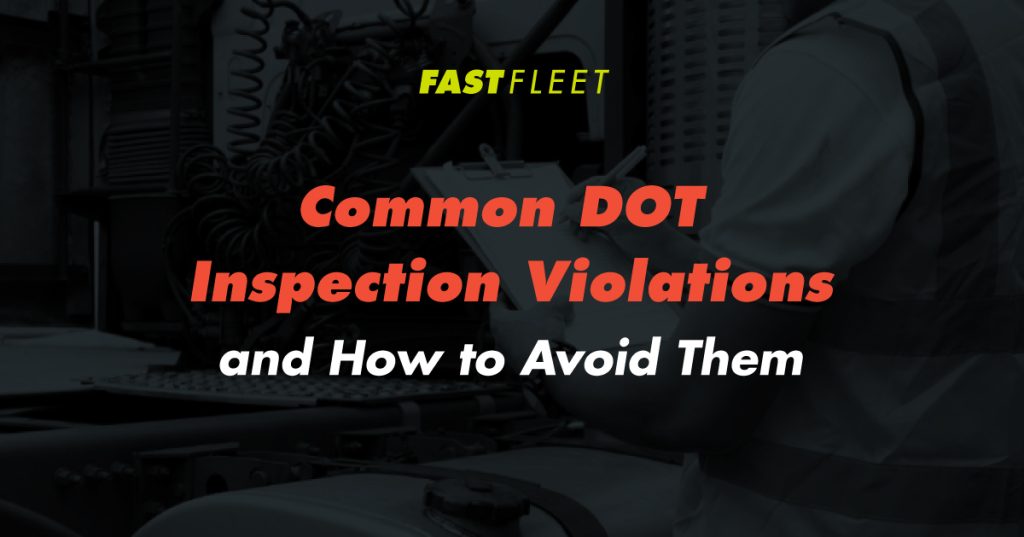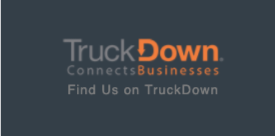Common DOT Inspection Violations and How to Avoid Them
When it comes to commercial trucking, Department of Transportation (DOT) inspections are a necessary part of the job. These inspections help ensure the safety of both drivers and the public by checking for compliance with federal regulations.
However, failing a DOT inspection can result in fines, downtime, and even affect your fleet’s safety record.
To help you steer clear of trouble, we’ll explore some of the common DOT inspection violations and how to avoid them.
Common Types of DOT Inspection Violations
DOT inspections can reveal a wide range of violations, but they typically fall into three main categories: vehicle-related violations, driver-related violations, and paperwork-related violations.
Vehicle-Related Violations
Brake Violations: Brake issues are one of the most common violations. This includes problems like out-of-adjustment brakes, worn brake linings, or air leaks. Brake violations are particularly concerning because they can lead to accidents due to decreased stopping power.
Tire Violations: Tire problems, such as inadequate tread depth or damaged tires, can lead to blowouts and accidents. Drivers must ensure that tires are properly maintained and replaced when necessary.
Lighting Violations: Malfunctioning lights, including headlights, taillights, and turn signals, are frequent violations. These violations reduce visibility and increase the risk of collisions.
Load Securement Violations: Improperly secured cargo poses a danger to both the driver and others on the road. Cargo that’s not adequately restrained can shift or fall, causing accidents.
Driver-Related Violations
Hours-of-Service (HOS) Violations: Violating HOS regulations can lead to fatigue-related accidents. Drivers must adhere to strict rules regarding driving hours, break times, and rest periods.
Licensing Violations: Operating a commercial vehicle without the correct licensing is a serious violation. All drivers must have the appropriate Commercial Driver’s License (CDL) class for the vehicle they operate.
Missing or Incomplete Documentation: Failure to carry essential documents like your CDL, medical examiner’s certificate, or inspection reports can result in violations.
Paperwork-Related Violations
Recordkeeping Violations: Accurate record-keeping is crucial. Violations related to logs, inspection reports, and maintenance records can result in fines and compliance issues.
False Reports: Falsifying any record, such as a logbook or inspection report, is a severe violation. It undermines the integrity of DOT inspections.
Consequences of DOT Inspection Violations
The consequences of DOT inspection violations can be severe and far-reaching:
Fines: Violations often come with hefty fines that can impact your bottom line.
Out-of-Service Orders: Serious violations may result in your vehicle being placed out of service until the issues are resolved.
CSA Scores: Violations affect your Compliance, Safety, and Accountability (CSA) scores, which can lead to more frequent inspections and reduced business opportunities.
How to Avoid DOT Inspection Violations
Preventing DOT inspection violations requires a proactive approach to compliance. Here are some tips to help you stay on the right side of the law:
Vehicle Maintenance
Regular Inspections: Conduct routine inspections to catch and address vehicle-related issues before they become violations.
Brake and Tire Maintenance: Pay special attention to brakes and tires, ensuring they meet safety standards.
Lighting Checks: Regularly inspect and replace malfunctioning lights.
Cargo Securement: Use appropriate load securement equipment and secure cargo properly.
Driver Training
Hours-of-Service Training: Train drivers on HOS regulations and the importance of taking breaks and rest periods.
Licensing Awareness: Ensure drivers understand the importance of having the correct CDL class.
Documentation Training: Emphasize the importance of carrying and maintaining accurate documents.
Responding to Violations
Address Violations Promptly: If your vehicle or driver receives a violation during an inspection, address it immediately to avoid further penalties.
DOT inspections are essential for maintaining safety standards in the trucking industry.
Understanding common violations and taking steps to prevent them is not only a legal obligation but also a way to ensure the safety of your drivers and others on the road.
By proactively addressing potential issues through regular maintenance and comprehensive training, you can navigate DOT inspections with confidence and keep your fleet running smoothly.
Don’t let DOT violations disrupt your operations.
Stay compliant, keep your drivers safe, and protect your bottom line.
















